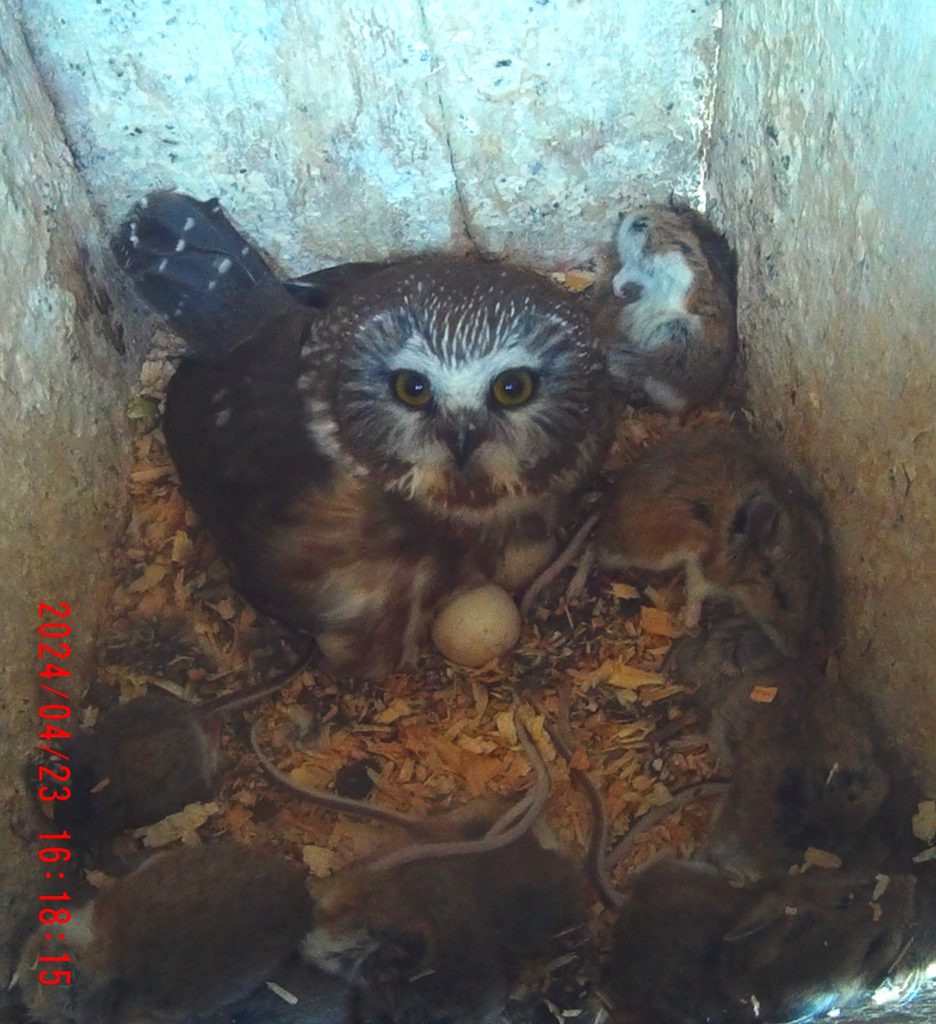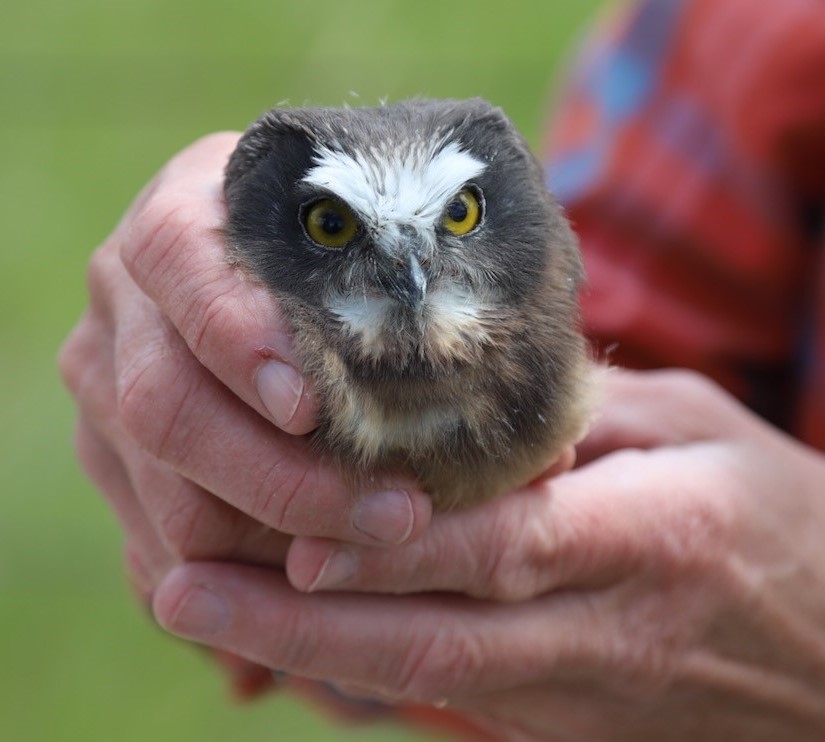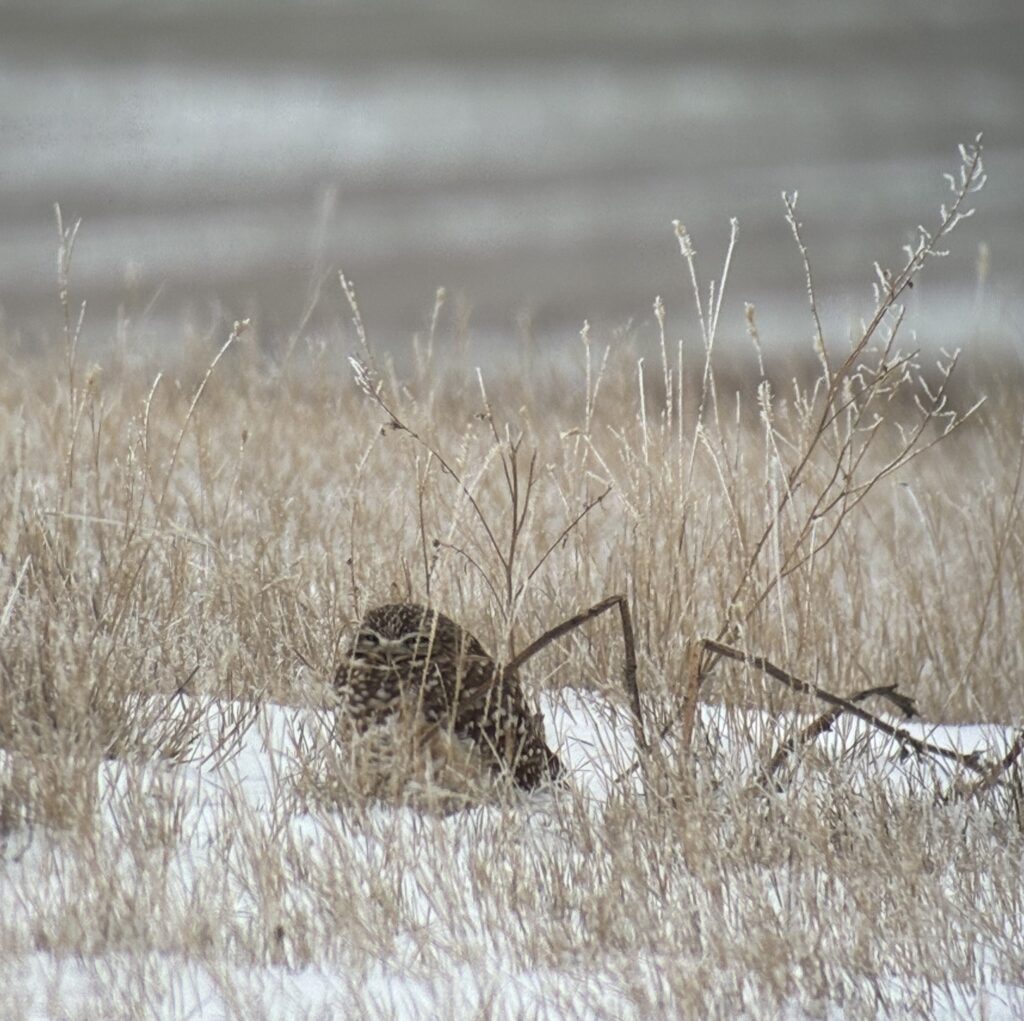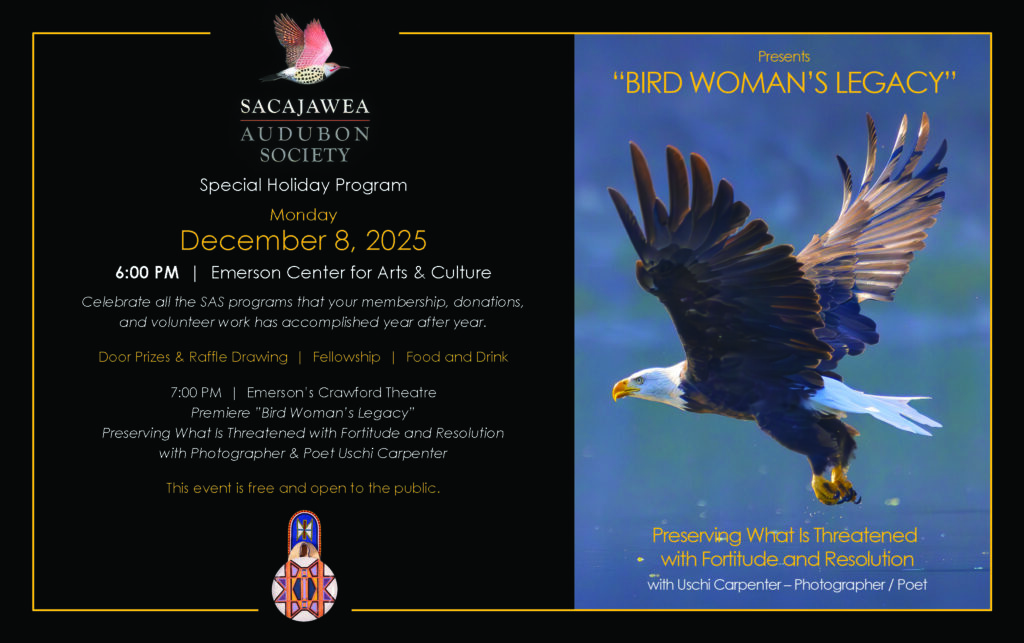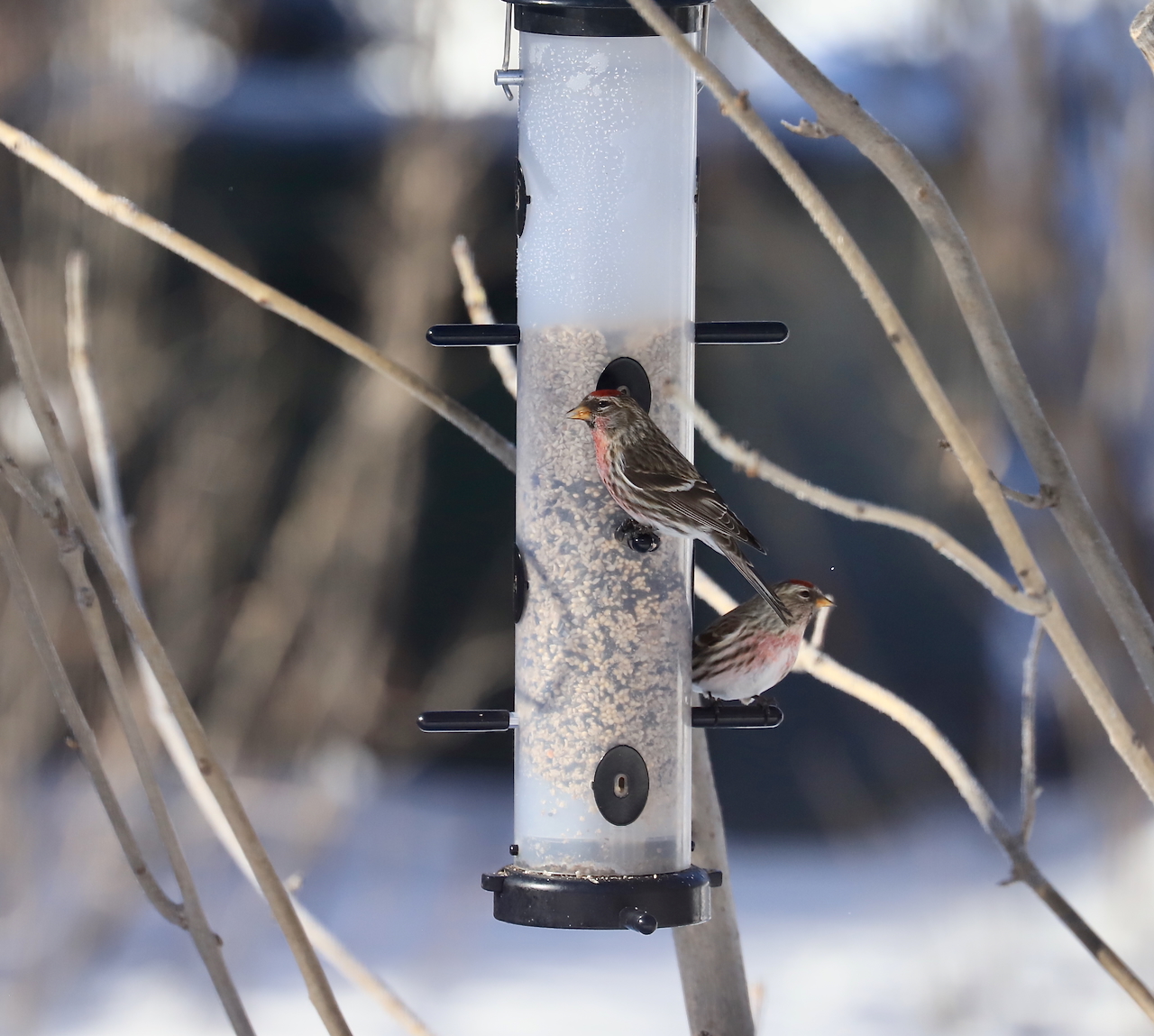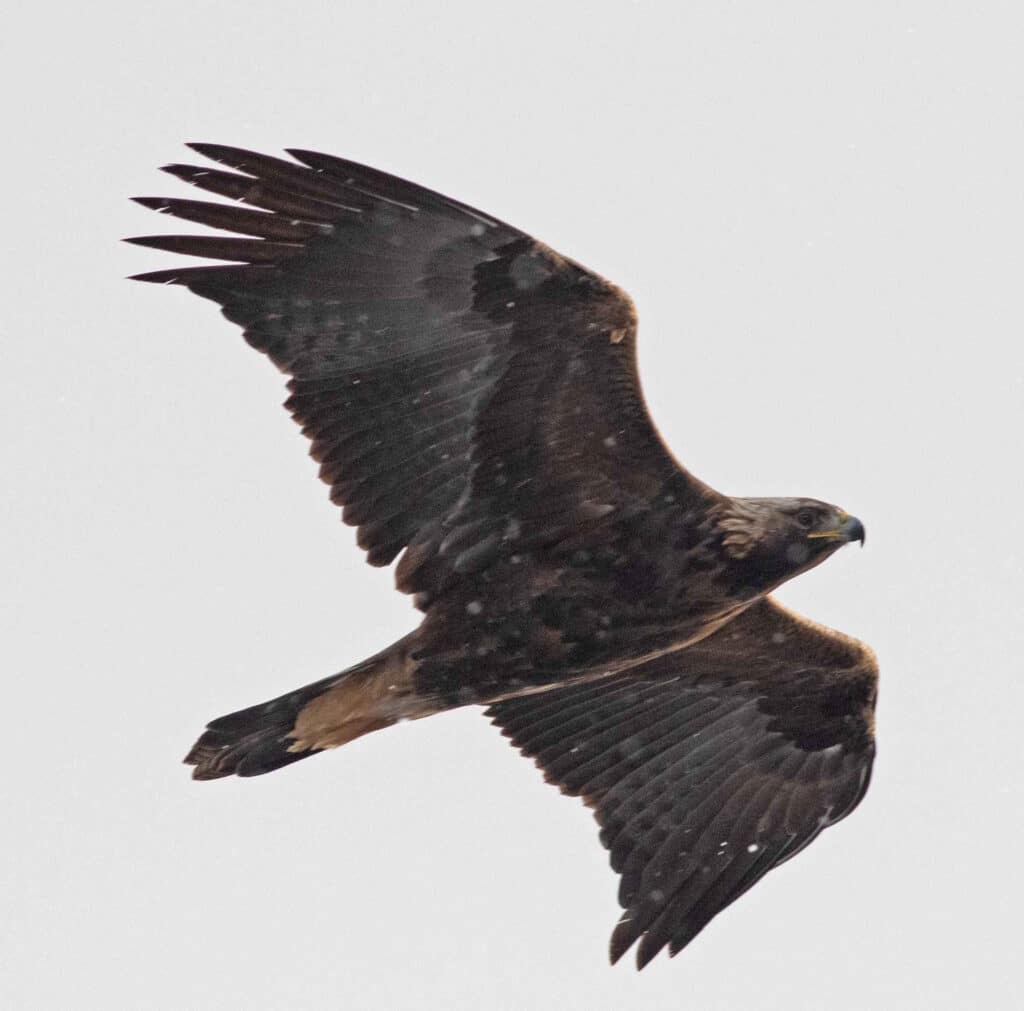by Paulette Epple
A Great Year for Kestrels (and Owlets!)
It was another fantastic year for our kestrel nest box program! Kestrels used 28 of our boxes and we had a record number of 96 young kestrels fledge. But in addition, we had an exciting surprise this year when we found a Northern Saw-whet Owl nesting in one of our boxes!
This Northern Saw-whet Owl laid 6 eggs and as you can see in the accompanying photo, she was being well supplied with a larder full of mice supplied by the male owl. Unfortunately, 4 of the eggs were infertile, but 2 hatched and grew into handsome young owlets. Our banding permit does not allow the banding of owls, but we were lucky to have Vince Slabe of the Peregrine Fund accompany us and band the owlets before they fledged. Whereas young kestrels can often be feisty, these young owlets were completely calm and docile.
This season yielded another surprise when we found a box of SIX healthy kestrel chicks crowded together. That was a first over the 12-year project! A typical kestrel nest has 4 to 5 chicks.
The year ended with 131 kestrel eggs laid in our boxes, 96 eggs hatched, with all 96 nestlings surviving to fledgling age. This gives us a 73% success rate for the year. We were able to band 88 of the chicks and we also captured and banded 3 adult females on the nest.
Despite our very successful season, we experienced 6 nest failures this year. One was from some form of predation, probably raccoon. Other nest failures happened in boxes where the wood shavings were mostly missing and thus the birds laid their eggs on bare wood. We clean boxes and replenish shavings every spring, but European Starlings are known to use kestrel boxes and the first thing they do is remove the shavings by literally picking up mouthfuls of shavings and throwing them out the opening before they build a grass nest. When a kestrel takes over a box at this point, they wind up laying eggs on the bare wood and the lack of insulation can cause the eggs to get too cold, arresting development.
Sacajawea Audubon continues to support the declining American Kestrel population by providing quality nesting sites in our part of Southwest Montana. We wish to extend our heartfelt gratitude to our landowner hosts, our volunteers that donate their time cleaning out and monitoring boxes, and the generous kestrel box sponsors that make this project possible. Special thanks to Alicia and Dennis Ochs who build new nest boxes for us when we need them.
